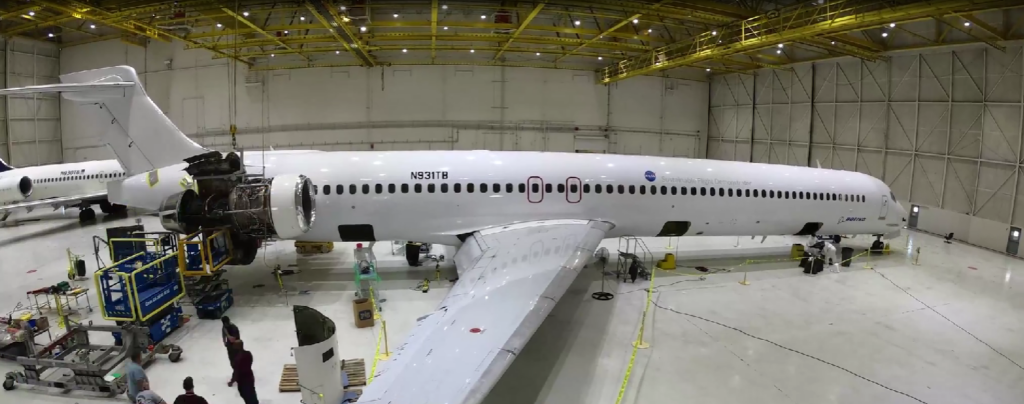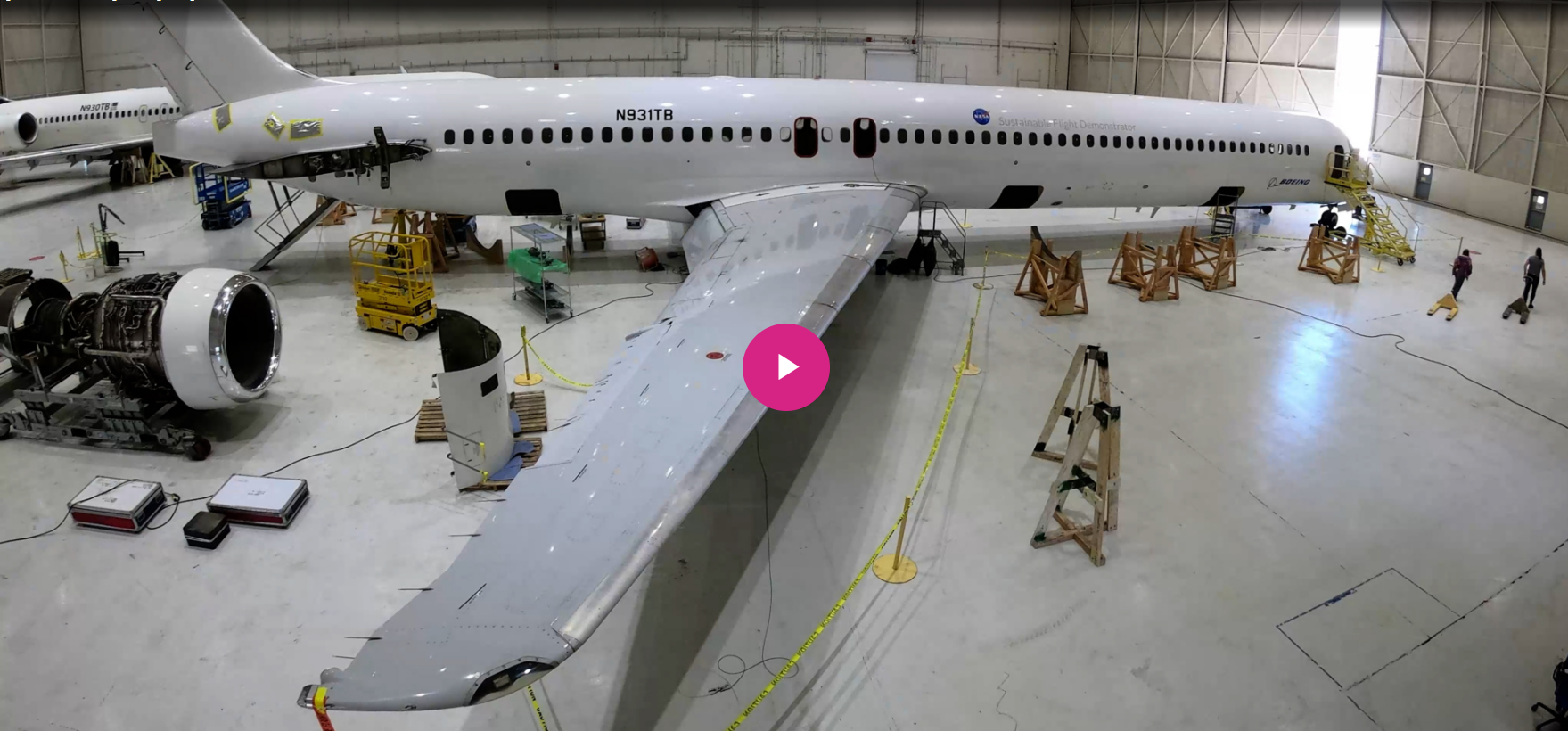Boeing Launches X-66 Sustainable Flight Demonstrator Project, Advancing in Green Aviation Technology

Key Impact Points:
- Boeing’s X-66 Sustainable Flight Demonstrator: Boeing is transforming an MD-90 jet into the X-66 Sustainable Flight Demonstrator, as part of an effort to advance sustainable aviation.
- Modification for Enhanced Aerodynamics: The project involves removing the jet’s original wings to test the Transonic Truss-Braced Wing (TTBW) design, featuring ultrathin wings with larger spans for improved fuel efficiency and reduced emissions.
- NASA’s Net-Zero Emissions Goal: The X-66 project aligns with NASA’s goal of achieving net-zero aviation greenhouse gas emissions, with ground and flight testing slated to start in 2028.
- 3D Scanning and Modeling for Design Accuracy: Boeing is employing 3D laser scanning and modeling software to accurately integrate new X-66 components into the existing MD-90 structure, enhancing design precision and risk mitigation.
Boeing has begun extensive modification of an airplane that will become the X-66 Sustainable Flight Demonstrator (SFD), removing engines and completing 3D metrology scans to inform the plane’s design and build plan.
The MD-90 jet’s original wings will soon be removed to test the Transonic Truss-Braced Wing (TTBW) design with new ultrathin wings braced by struts with larger spans and higher-aspect ratios. TTBW’s wider wing span and aerodynamic efficiency could significantly accelerate opportunities to reduce fuel use and emissions.
Boeing Begins X-66 Modification, Removing Engines and Adding Scanning Technology

The X-66 is NASA’s first experimental plane project focused on helping the U.S. achieve its goal of net-zero aviation greenhouse gas emissions. Ground and flight testing is expected to begin in 2028.
Boeing released a time-lapse video of recent steps in the conversion including:
- Removal of the engines and thrust reversers
- Jacking and shoring of the jet to simulate the condition of the airplane during full modification
- 3D laser scanning of the airplane structure
With the scanning data, Boeing will use 3D modeling software to overlay the existing MD-90 structure with the new X-66 components, enabling more accurate spatial integration and the opportunity to identify and mitigate risks early in the modification process.
Related Article: Boeing Partners with The World Energy Council to Advance Aerospace Energy Transitions
Boeing will continue to provide updates as the project progresses.












